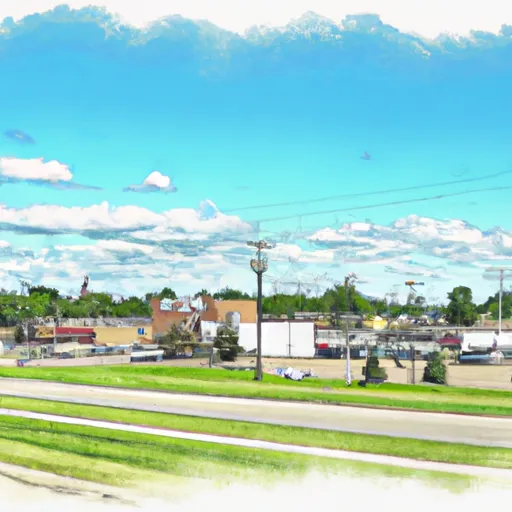-
 Snoflo Premium
Snoflo Premium
Get unlimited access to all our content
With no Ad interruptions! - Start Your Free Trial Login with existing account
Waldorf
Eden Index
Climate
6.5
•
Recreation
0.4
•
Community
1.5
•
Safeguard
3.1/10

Waldorf, Minnesota is a small town located in Waseca County, nestled in the beautiful midwestern region of the United States. The town experiences a typical midwestern climate with warm summers and cold winters. Summers are mild with temperatures ranging from the 70s to the 80s Fahrenheit, while winters can be bitterly cold, with temperatures often dropping below freezing.
Hydrologically, Waldorf is enriched by the presence of multiple water bodies. The town is surrounded by several lakes and rivers, offering a variety of recreational activities such as boating, fishing, and swimming. The region's hydrology also supports the growth of lush vegetation, making it an excellent location for nature enthusiasts.
Outdoor recreation is abundant in Waldorf, with numerous opportunities to explore and enjoy the natural surroundings. The area boasts several parks and hiking trails, providing excellent options for hiking, biking, and nature walks. The lakes and rivers offer opportunities for water sports and activities, including kayaking, canoeing, and paddleboarding. Additionally, the region's diverse wildlife and birdwatching opportunities attract wildlife enthusiasts and bird lovers.
In summary, Waldorf, Minnesota, offers a pleasant midwestern climate, enriched by its hydrology constituents, including lakes and rivers. The region provides ample opportunities for outdoor recreation, making it an attractive destination for nature lovers and adventure seekers.
What is the Eden Index?
The Snoflo Eden Index serves as a comprehensive rating system for regions, evaluating their desirability through a holistic assessment of climate health, outdoor recreation opportunities, and natural disaster risk, acknowledging the profound impact of these factors on livability and well-being.
Climate Health Indicator (CHI): 6.5
Waldorf receives approximately
830mm of rain per year,
with humidity levels near 82%
and air temperatures averaging around
8°C.
Waldorf has a plant hardyness factor of
4, meaning
plants and agriculture in this region thrive during a short period during spring and early summer. Most
plants will die off during the colder winter months.
By considering the ideal temperature range, reliable water supplies, clean air, and stable seasonal rain or snowpacks, the Climate Health Indicator (CHI) underscores the significance of a healthy climate as the foundation for quality living.
A healthy climate is paramount for ensuring a high quality of life and livability in a region, fostering both physical well-being and environmental harmony. This can be characterized by ideal temperatures, reliable access to water supplies, clean air, and consistent seasonal rain or snowpacks.
Weather Forecast
Streamflow Conditions
Minnesota
Area Rivers
Minnesota
Snowpack Depths
Minnesota
Reservoir Storage Capacity
Minnesota
Groundwater Levels
Recreational Opportunity Index (ROI): 0.4
The Recreational Opportunity Index (ROI) recognizes the value of outdoor recreational options, such as parks, hiking trails, camping sites, and fishing spots, while acknowledging that climate plays a pivotal role in ensuring the comfort and consistency of these experiences.
Access to outdoor recreational opportunities, encompassing activities such as parks, hiking, camping, and fishing, is crucial for overall well-being, and the climate plays a pivotal role in enabling and enhancing these experiences, ensuring that individuals can engage in nature-based activities comfortably and consistently.
Camping Areas
| Campground | Campsites | Reservations | Toilets | Showers | Elevation |
|---|---|---|---|---|---|
| Hill Lake City Park | 30 | 1,274 ft | |||
| Sakatah Lake State Park | 60 | 1,053 ft | |||
| Riverside City Park - Princeton | None | 956 ft | |||
| Father Hennepin State Park | 100 | 1,313 ft | |||
| Mille Lacs Kathio State Park | 70 | 1,281 ft | |||
| Itasca County Fairgrounds | None | 1,302 ft | |||
| Bray County Park | 43 | 1,068 ft | |||
| Ann Lake - Sand Dunes State Forest | 30 | 990 ft | |||
| Pokegama Rec Area | 21 | 1,291 ft | |||
| Aitkin County Campground | 7 | 1,201 ft |
Nearby Fishing
Nearby Ski Areas
Catastrophe Safeguard Index (CSI):
The Catastrophe Safeguard Index (CSI) recognizes that natural disaster risk, encompassing floods, fires, hurricanes, and tornadoes, can drastically affect safety and the overall appeal of an area.
The level of natural disaster risk in a region significantly affects safety and the overall livability, with climate change amplifying these risks by potentially increasing the frequency and intensity of events like floods, fires, hurricanes, and tornadoes, thereby posing substantial challenges to community resilience and well-being.
Community Resilience Indicator (CRI): 1.5
The Community Resilience Indicator (CRI) recognizes that education, healthcare, and socioeconomics are crucial to the well-being of a region. The CRI acknowledges the profound impact of these elements on residents' overall quality of life. By evaluating educational resources, healthcare accessibility, and economic inclusivity, the index captures the essential aspects that contribute to a thriving community, fostering resident satisfaction, equity, and social cohesion.

